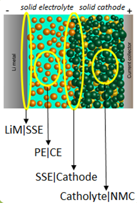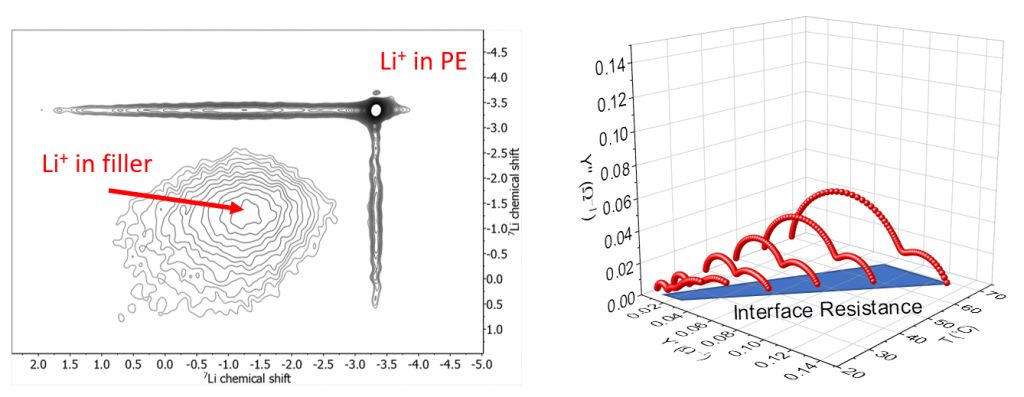June 2022
Intermediate result from partners: CICe, SCHOTT

The effective Lithium transport plays a key role for the performance of a solid-state battery cell. Especially when moving from one material to the next the Lithium-ion transport can be hindered by the interface resistance of these two materials. Therefore, in the SAFELiMOVE project special care was taken to characterize surfaces and interfaces.
The related activity aims for the understanding of the solid-solid interfaces that are fundamental to the novel SAFELiMOVE battery concept. It is structured in tasks for assessing interfaces in solid electrolyte, Li metal-solid electrolyte interface in anode, catholyte-active material interfaces in cathode, solid-solid interfaces at full coin cell level configuration and solid-solid interfaces at full single layer pouch cell configuration. These tasks are carried out by the consortium partners CICe, SCHOTT, Hydro-Quebec, ABEE, CEA and CIDETEC.
The results of the assessment of the interfaces in the solid electrolytes were summarized in a report by SCHOTT and CICe. This report comprises the topics:
• The surface characterization of oxidic electrolytes;
• The determination of interfacial resistance between ceramic and polymer;
• Set up and evaluation of a trilayer hybrid electrolyte model system.
The objectives related to this report have been fulfilled. New or adapted tests and characterization methods to achieve greater understanding of surfaces and solid-solid interfaces have been developed. A detailed characterization of the oxidic and polymeric electrolytes gave a deep understanding of the solid-solid interfaces at materials level.
The interfacial transport properties between the oxidic particles and polymer electrolytes were analyzed in detail in the hybrid ceramic-polymer electrolytes itself as well as in a developed trilayer hybrid electrolyte (ceramic pellets sandwiched between polymeric layers), which serve as a 2D model system.
Design rules for compatible and stable interfaces between the oxides and polymers were derived. Based on this obtained knowledge feedback was provided to partners to optimize material’s design, functionality as well as processibility into functional battery layers.
